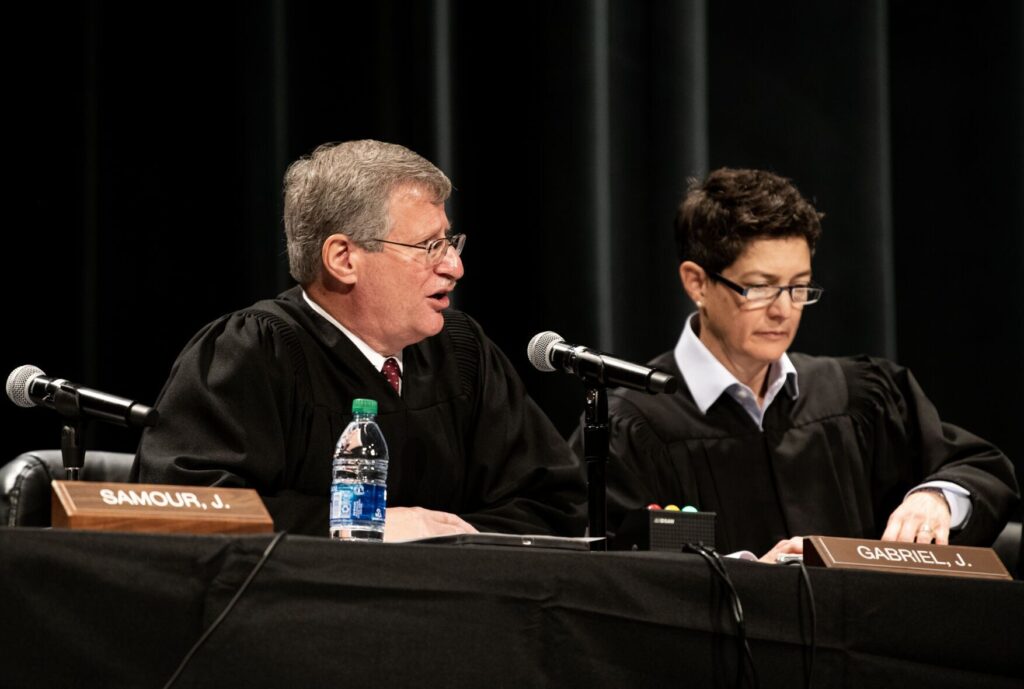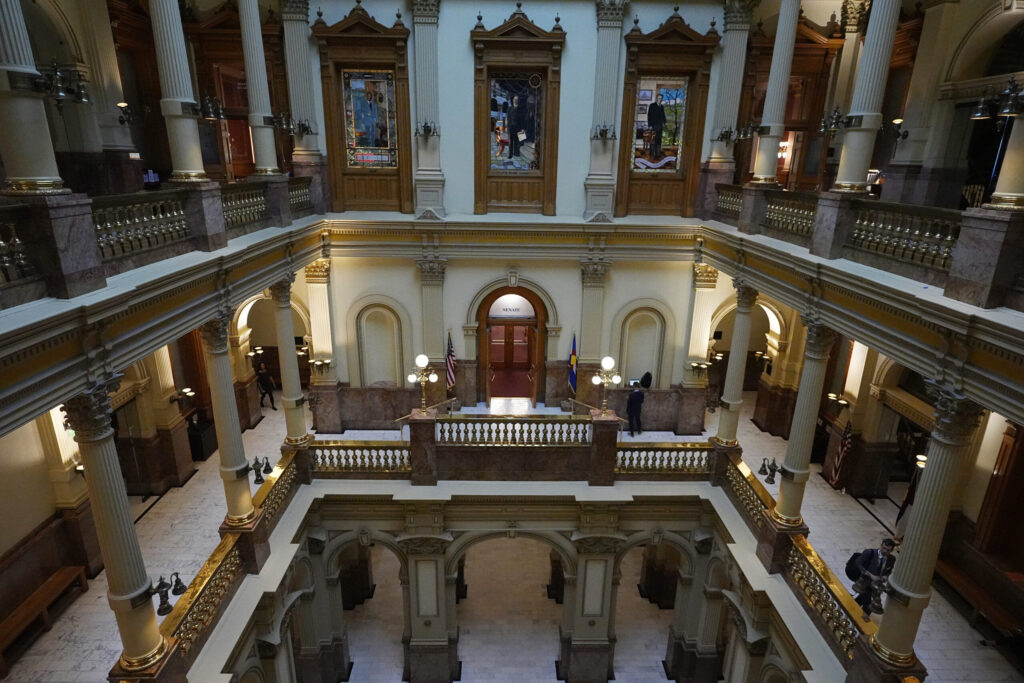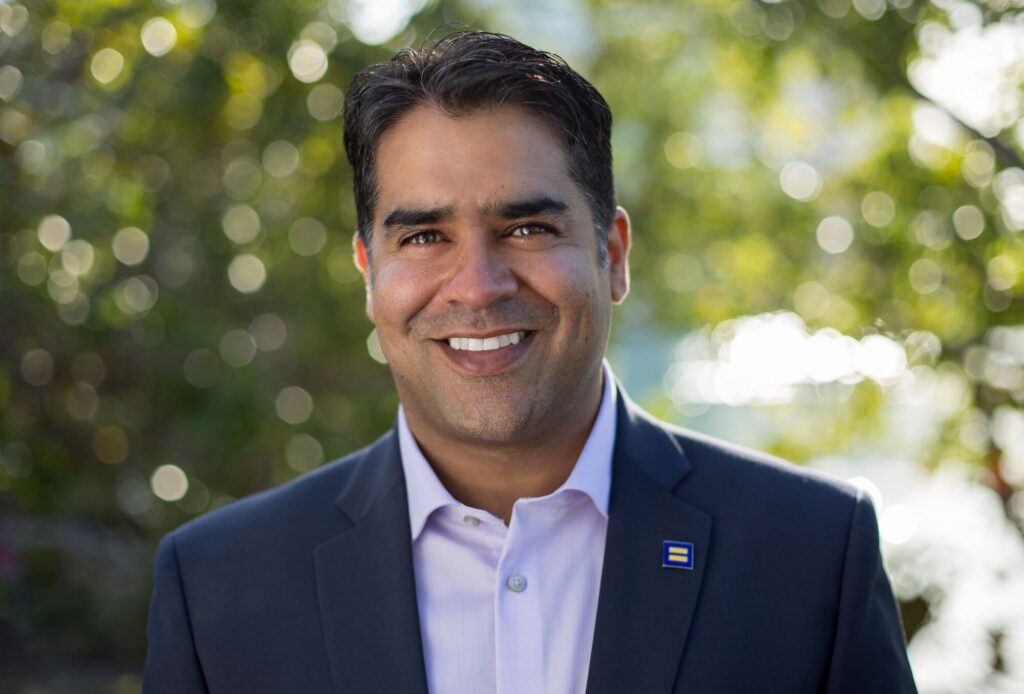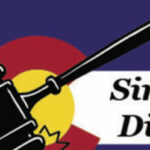West Slope residents protest BLM’s closure of roads

GRAND JUNCTION – Approximately 200 Western Slope residents – men, women and children – gathered on Saturday, May 2 at the Bureau of Land Management’s western Colorado headquarters to protest the BLM’s policy of closing as many as 60 percent of historical county roads, ATV trails and dead-end routes on public lands that have been used for generations.
“We don’t tear down gates, so if we’re going to be a legal group, we can’t be breaking laws, right?” said Brandon Siegfreid, the director of the Public Lands Access Association, which lobbies for keeping roads on public lands open. “We’re not about civil disobedience. We’re strictly about roads. But don’t be confused, we’re not partners with the BLM.”
In 2014, a self-styled “patriot” activist who calls himself David Justice (actual name Stanley Anderson) was arrested by the BLM following an August 2013 protest that involved 23 people who ripped out a metal barrier that blocked vehicular access to Cushman Creek Road in rural Montrose County. Anderson argued in court that the historical route had been used by Native Americans, settlers and Western Slope residents for hundreds of years and that the federal government didn’t have jurisdiction over a county road that passed through federal lands; he was charged with and convicted of trespassing and vandalism, and the case is under appeal.
One of the main pieces of evidence against Justice/Anderson was a photograph of him wielding a long wooden pole as a lever while attempting to dislodge the barrier, which was published with his consent on the front page of the August 2013 issue of the Western Slope Watchdog, a regional monthly newspaper.
The early May protest at BLM headquarters involved only sign waving, speeches and applause, and featured Western Slope Republican dignitaries such as former Congressman Scott McInnis, now a Mesa County commissioner, fellow County Commissioners John Justman and Rose Pugliese, and State Sen. Ray Scott.
McInnis introduced the audience to Luke Dobbs and some of his children and their friends who held signs demanding access to public lands so they can “hunt, fish and ride” and because “we are the future.”
“When I came in here today, the best signs I saw… I’m not talking about the art of the sign, but it reflects a message that is so critical for every one of us, so I asked the father Luke if he would allow his children up here and read these signs,” McInnis said.
“The most important thing that I am here for is, you know, we all grew up with public access to public lands. We all got to enjoy them,” Dobbs said. “I want to make sure that they’re open for these guys and for my grandchildren and everybody else to come, so we can all enjoy Colorado while we live here.”
McInnis said he takes frequent morning hikes in Mesa County’s Ghost Canyons and Rabbit Valley and often sees families camping there.”I saw several people camping. I saw people of all ages. I saw people that were walking. I saw motorcycles. I saw ATVs. I saw SUVs. I saw mountain bikes. I saw cattle,” McInnis said. “I saw open space as far as I could see, reminding us that 77 percent of our county is owned by the government.”
Mesa County Commissioner Pugliese said she had been educated by Siegfried about public lands access issues during her three years of public service.
“I look around and I see young people and families with their kids, because this is such an important issue to you, that you would bring your families here today to show us,” Pugliese said. “It is so important for us as commissioners to be able to articulate that this is truly what our constituents want. I can see that, obviously, from the looks on people’s faces as Brandon was talking and Sen. Scott was talking, this is such an important issue for western Colorado, is such an important issue for Mesa County, but this is a really important issue for our families.”
Sen. Scott said the public lands access movement had nothing to do with the transfer of public lands to state management.
“Our opposition tried to spin this into something it’s not, which is the selling off of public lands,” Scott said. “They come up with these wild schemes that they started talking about, that all we wanted to do is get control of public lands for the state, and then we would go sell them. Are you kidding? These people want to protect public lands more than what the federal government wants to do. They’ve got it backwards.”Commissioner Justman said the county board had spent two years discussing dead-end routes with the BLM.
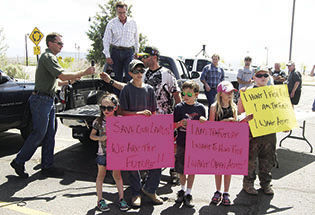
“They have told us how, ‘Oh, there’s four routes that go to one destination. You only need one,'” Justman said. “Some of them are a little bit easier for maybe the younger folks or somebody that can’t take the more challenging route. If they close the other three, in 10 years, that fourth one is going to be used so much they’ll have to close it.”
Justman blamed the closure of public lands access on former Secretary of Interior Ken Salazar.
“Yesterday, I got on the computer and I wound up going back to 2009, 2010, when Coloradoan Ken Salazar was the head of the Department of Interior,” Justman said. “I never thought about it because it’s so much in the past.”
Siegfried said the PLAA was gathering signatures on a petition to Governor John Hickenlooper asking him to enforce state laws that protect public lands access.
“At some point, the state stood for our legal right of ways. But now we’re largely ignoring them,” Siegfried said. “We’re trying to remind the governor that a lot of these routes match the state laws that define them as public highways. There’s three state laws that Colorado passed since 1876 that define legal right of ways.”
Siegfried said he was reluctant to sue the federal government due to the costs but he did not rule it out. He said he was closely watching the court battle between the state of Utah and the federal government over federal lands issues.
“If we have to sit down with the federal government, we tell them if we take you to court, you’re going to lose,” he said, citing a 19th century mining access statute called RS 2477 which protected access to the newly opened West. “Garfield County is having some success with this conversation, so we may not have to take these all to court. When you look at that litigation in Utah, there’s hundreds of routes on one piece of litigation, so we don’t have to do one road at a time.”
Siegfried said closing public lands access could damage tourism and drive away hunters from western Colorado, the economy of which relies heavily on these two industries.
“It’s going to have a negative impact on our community, our economy,” he said. “Colorado Parks and Wildlife came out with numbers, you can safely say $250 million per year is spent in Mesa and Garfield counties between hunting and fishing and motorized recreation. If you close 60 percent of our routes, they’re going to go somewhere else.”
Quality of life issues are important to people who use public lands, Siegfried said.
“The congestion is going to go up big time on these routes. Your privacy, your valued experiences with peace and quiet in the wilderness are going to be impacted because your camper is going to be driven by about 40 times a day versus once or twice,” he said. “It’s going to change things a lot.”




